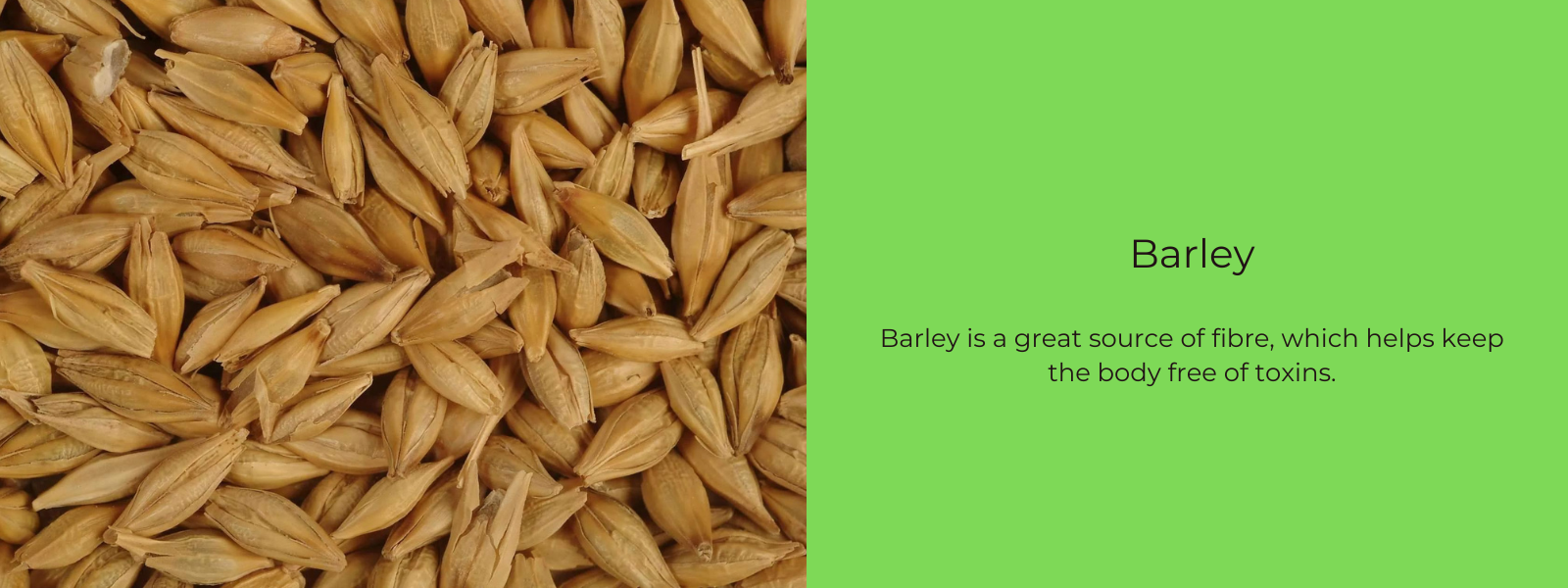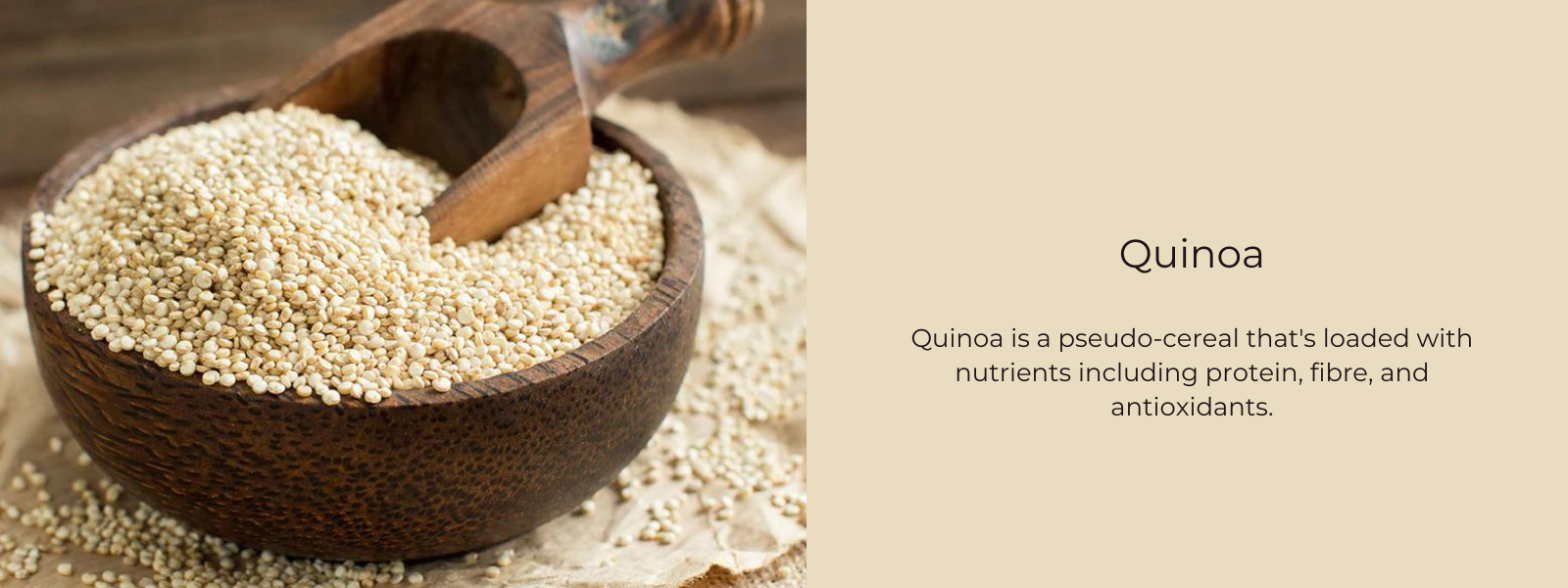Barley offers a range of health benefits, including its low glycemic impact, making it a favorable choice for individuals seeking to manage blood sugar levels effectively. The low glycemic index (GI) of barley is a key feature that contributes to its ability to promote stable blood sugar levels. The glycemic index measures how quickly carbohydrates in food raise blood sugar levels after consumption. Foods with a low GI release glucose into the bloodstream gradually, resulting in a slower and more sustained increase in blood sugar levels compared to high-GI foods. This slow-release effect helps prevent rapid spikes and crashes in blood sugar, which can be particularly beneficial for individuals with diabetes or those at risk of developing diabetes. Additionally, barley is rich in dietary fiber, particularly beta-glucans, which further contribute to its low glycemic impact. Fiber slows down the digestion and absorption of carbohydrates, leading to a gradual and steady release of glucose into the bloodstream. Moreover, barley contains important nutrients such as vitamins, minerals, and antioxidants, which support overall health and well-being. Incorporating barley into the diet through dishes like barley salads, soups, stews, or as a side dish can provide a satisfying and nutritious option while helping to maintain stable blood sugar levels.
Table of Contents
What Is Barley?
Barley is a cereal grain that belongs to the grass family Poaceae. It is one of the oldest cultivated grains and has been used as a staple food in various cultures for thousands of years. Barley is primarily grown for its seeds, which are harvested and processed for various culinary and nutritional purposes.
The barley plant typically grows in temperate climates and is adaptable to a wide range of soil conditions. It has a distinctive appearance, with tall, slender stalks topped by dense clusters of flowers that develop into grains. The grains, known as barley kernels or barley groats, are small and oval-shaped, with a hull that is usually removed before consumption.
Barley is commonly used in a variety of food products, including bread, cereal, soups, stews, and beverages. It can be processed into different forms, such as pearl barley (where the hull and bran layers are removed) or barley flour (ground barley kernels), to suit various culinary needs.
Nutritionally, barley is rich in carbohydrates, dietary fiber, protein, vitamins, and minerals. It is particularly high in fiber, especially soluble fiber, which has been associated with various health benefits, including improved digestion, heart health, and blood sugar control.
Barley is also a good source of essential nutrients such as vitamins B1 (thiamine), B3 (niacin), B6 (pyridoxine), and minerals like manganese, selenium, phosphorus, and copper. Additionally, barley contains antioxidants, phytonutrients, and beta-glucans, which have been linked to various health-promoting effects.
Benefits of Barley:
Barley is a nutrient-dense whole grain that offers a variety of health benefits, including its low glycemic impact, which makes it an excellent choice for supporting overall health and blood sugar management. Here's a detailed look at the benefits of barley and its low glycemic impact:
- Low Glycemic Index (GI): Barley has a relatively low glycemic index, which means it causes a gradual and moderate increase in blood sugar levels after consumption. Foods with a low GI release glucose into the bloodstream slowly, leading to more stable blood sugar levels compared to high-GI foods. This slow and steady release of glucose helps prevent sudden spikes and crashes in blood sugar, making barley a suitable option for individuals with diabetes or those looking to manage their blood sugar levels effectively.
- High Fiber Content: Barley is rich in dietary fiber, particularly soluble fiber, which plays a crucial role in its low glycemic impact. Soluble fiber forms a gel-like substance in the digestive tract, slowing down the absorption of glucose into the bloodstream and promoting more stable blood sugar levels over time. Additionally, fiber helps promote feelings of fullness and satiety, which can aid in weight management and blood sugar control.
- Beta-Glucans: Barley contains a type of soluble fiber called beta-glucans, which have been shown to have numerous health benefits, including supporting heart health, immune function, and blood sugar management. Beta-glucans help regulate blood sugar levels by slowing down the absorption of carbohydrates and improving insulin sensitivity, which is beneficial for individuals with diabetes.
- Nutrient Density: Barley is packed with essential nutrients, including vitamins, minerals, and antioxidants, which contribute to overall health and well-being. It is particularly rich in B vitamins, iron, magnesium, zinc, and selenium, all of which play important roles in various bodily functions. Additionally, barley contains phytonutrients such as lignans and phenolic compounds, which have antioxidant and anti-inflammatory properties.
- Versatility in Cooking: Barley is incredibly versatile and can be used in a wide range of dishes, including soups, stews, salads, risottos, pilafs, and breakfast bowls. Its chewy texture and nutty flavor make it a delicious addition to both savory and sweet recipes. By incorporating barley into meals, individuals can enjoy its health benefits while adding variety and nutritional value to their diet.
Why Does Barley Have Low Glycemic Impact?
Barley's low glycemic impact can be attributed to several factors:
- Complex Carbohydrates: Barley contains complex carbohydrates, which take longer for the body to break down and convert into glucose compared to simple carbohydrates found in refined grains and sugary foods. The slow digestion and absorption of complex carbohydrates contribute to a lower glycemic impact and more stable blood sugar levels.
- Beta-Glucans: Barley contains beta-glucans, a type of soluble fiber that has been shown to improve blood sugar control. Beta-glucans form a viscous gel in the digestive tract, which slows down the absorption of carbohydrates and helps regulate blood sugar levels. Additionally, beta-glucans have been linked to improved insulin sensitivity, further supporting blood sugar management.
Is Barley Good To Maintain Sugar Level?
Barley is indeed beneficial for maintaining sugar levels due to several factors. With its low glycemic index (GI), barley causes a gradual and moderate increase in blood sugar levels after consumption, helping to prevent sudden spikes and crashes. Its high fiber content, particularly soluble fiber, slows down the absorption of glucose into the bloodstream, promoting more stable blood sugar levels over time. Additionally, barley contains beta-glucans, which have been shown to improve insulin sensitivity and regulate blood sugar levels. Furthermore, barley's nutrient density, including vitamins, minerals, and antioxidants, supports overall health and well-being, making it a valuable addition to a balanced diet for individuals looking to manage their blood sugar effectively. Incorporating barley into meals such as soups, salads, or as a side dish can provide sustained energy and promote stable blood sugar levels throughout the day.
Barley Recipes To Maintain Sugar Level:
Here are some delicious barley recipes that can help maintain stable blood sugar levels:
- Barley and Vegetable Soup:
- In a large pot, sauté onions, carrots, celery, and garlic until softened.
- Add vegetable broth, diced tomatoes, cooked barley, and your choice of vegetables such as spinach, kale, zucchini, and bell peppers.
- Season with herbs and spices like thyme, rosemary, and black pepper.
- Simmer the soup until the vegetables are tender and flavors are well combined. Serve hot with a sprinkle of grated Parmesan cheese or fresh herbs.
- Barley Salad with Chickpeas and Roasted Vegetables:
- Cook barley according to package instructions and let it cool.
- Toss cooked barley with roasted vegetables such as cherry tomatoes, bell peppers, eggplant, and red onions.
- Add cooked chickpeas, chopped fresh herbs like parsley or basil, and a simple vinaigrette made with olive oil, lemon juice, and Dijon mustard.
- Season with salt and pepper to taste and serve the salad chilled or at room temperature.
- Barley Breakfast Bowl:
- Cook barley according to package instructions and divide into serving bowls.
- Top with Greek yogurt, fresh berries (such as strawberries, blueberries, or raspberries), sliced almonds, and a drizzle of honey or maple syrup.
- Sprinkle with cinnamon or nutmeg for added flavor and enjoy this nutritious and satisfying breakfast option.
- Barley and Lentil Pilaf:
- Cook barley and lentils separately according to package instructions.
- In a skillet, sauté onions, garlic, and your choice of vegetables such as carrots, bell peppers, and peas until softened.
- Add cooked barley, lentils, and vegetable broth to the skillet. Season with cumin, coriander, and turmeric for added flavor.
- Simmer until the liquid is absorbed and the pilaf is heated through. Serve hot as a main dish or side dish.
- Barley Risotto with Mushrooms:
- In a saucepan, sauté sliced mushrooms, garlic, and shallots until browned and fragrant.
- Add cooked barley and vegetable broth to the saucepan, stirring frequently until the barley is creamy and tender.
- Stir in grated Parmesan cheese and chopped fresh parsley for added flavor. Serve hot with a sprinkle of black pepper.











Leave a comment